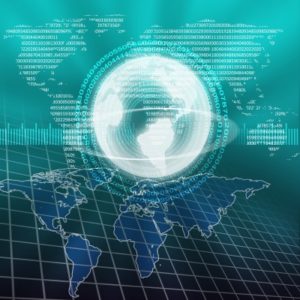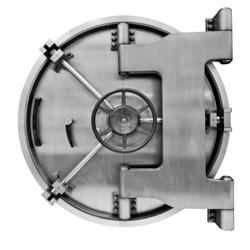In the new “Digital Industrial Economy,” described this week by
Gartner, “every budget (is) an IT budget, every company (is) a technology company, every business is becoming a digital leader and every person is becoming a technology company.”

On first glance, this might seem to create vast opportunities for those with IT skills in the years to come. Already, we’re seeing more technology professionals being moved into hybrid roles, where they combine their expertise with, say, marketing functions. However, the research firm is going further. At the Gartner Symposium/ITxpo 2013 in Orlando, it rolled out its new unified theory, which brings together essentially every buzzword to create, perhaps, a world Edward Snowden would warn us about. “Computing power will be cheap and covert,” said Analyst Peter Sondergaard. “We won’t know it is there. It will be in our jewelry and in our clothing.” Sondergaard said the Digital Industrial Economy -- which probably won’t be referred to by its acronym (DIE) -- “will be built on the foundations of the Nexus of Forces and the Internet of Everything by combining the physical world with the virtual.” The forces in the supposed nexus are “a confluence and integration of cloud, social collaboration, mobile and information.” The Internet of Everything is a world where almost everything is an Internet-connected device. “Digitalization exposes every part of your business and its operations to these forces,” Sondergaard told an audience of IT executives. “It is how you reach customers and constituents, how you run your physical plant, and how you generate revenue or deliver services.”
Follow the Money
In 2009, Gartner estimated there were 2.5 billion connected devices with unique IP addresses on the Internet. Most were devices people carry, including cell phones and personal computers. By 2020, Gartner believes there will be up to 30 billion IP-connected devices, most of them products. By that time, Sondergaard believes, “We will throw more computers into our laundry in a week than we have used in our lifetimes so far.”
Jobs and the Pace of Change
While Sondergaard didn’t directly address job opportunities in the Digital Industrial Economy, the outlines are fairly obvious.
- By 2017, nearly half of first-time computer purchases will be tablets, making mobile “the destination platform for all applications.” Score one for workers who create or empower mobile apps.
- While past IT leaders remained top vendors for long periods of time, in new areas such as cloud and mobile today’s leaders “were not on many CIO’s radar five years ago.” That means established companies will not be the safe employers they once were, and opportunities at established but rising startups should not be missed.
- “Many of the vendors who are on top today, such as Cisco, Oracle and Microsoft may not be leaders in the Digital Industrial Economy,” Sondergaard said.
Big Data Needs Big Security
In the Digital Industrial Economy, all of those 30 billion IP-connected devices generate information that needs to be collected, analyzed, put to use -- and always protected, both inside and outside the enterprise. “Digitalization will create new infrastructures and new vulnerabilities in our infrastructures,” Sondergaard said. “We recommend that you build a portfolio of security vendors because no single vendor addresses more than a fraction of your problem. Everyone will need to establish more agile security processes.” With a plethora of vendors and large amounts spent to protect Big Data, the Gartner outlook suggests jobs in cybersecurity – at all levels – should likewise be big for the foreseeable future.
 On first glance, this might seem to create vast opportunities for those with IT skills in the years to come. Already, we’re seeing more technology professionals being moved into hybrid roles, where they combine their expertise with, say, marketing functions. However, the research firm is going further. At the Gartner Symposium/ITxpo 2013 in Orlando, it rolled out its new unified theory, which brings together essentially every buzzword to create, perhaps, a world Edward Snowden would warn us about. “Computing power will be cheap and covert,” said Analyst Peter Sondergaard. “We won’t know it is there. It will be in our jewelry and in our clothing.” Sondergaard said the Digital Industrial Economy -- which probably won’t be referred to by its acronym (DIE) -- “will be built on the foundations of the Nexus of Forces and the Internet of Everything by combining the physical world with the virtual.” The forces in the supposed nexus are “a confluence and integration of cloud, social collaboration, mobile and information.” The Internet of Everything is a world where almost everything is an Internet-connected device. “Digitalization exposes every part of your business and its operations to these forces,” Sondergaard told an audience of IT executives. “It is how you reach customers and constituents, how you run your physical plant, and how you generate revenue or deliver services.”
On first glance, this might seem to create vast opportunities for those with IT skills in the years to come. Already, we’re seeing more technology professionals being moved into hybrid roles, where they combine their expertise with, say, marketing functions. However, the research firm is going further. At the Gartner Symposium/ITxpo 2013 in Orlando, it rolled out its new unified theory, which brings together essentially every buzzword to create, perhaps, a world Edward Snowden would warn us about. “Computing power will be cheap and covert,” said Analyst Peter Sondergaard. “We won’t know it is there. It will be in our jewelry and in our clothing.” Sondergaard said the Digital Industrial Economy -- which probably won’t be referred to by its acronym (DIE) -- “will be built on the foundations of the Nexus of Forces and the Internet of Everything by combining the physical world with the virtual.” The forces in the supposed nexus are “a confluence and integration of cloud, social collaboration, mobile and information.” The Internet of Everything is a world where almost everything is an Internet-connected device. “Digitalization exposes every part of your business and its operations to these forces,” Sondergaard told an audience of IT executives. “It is how you reach customers and constituents, how you run your physical plant, and how you generate revenue or deliver services.”


